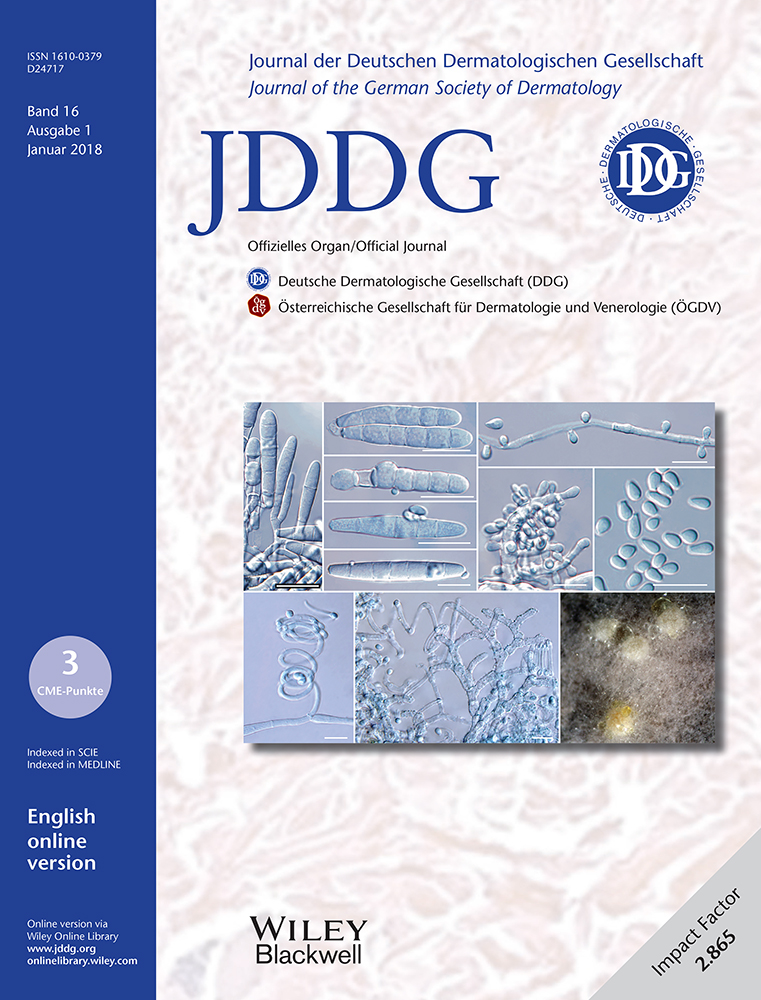Molecular epidemiology of Trichophyton quinckeanum – a zoophilic dermatophyte on the rise
Summary
Background
Formerly only referred to as a subspecies (T. mentagrophytes var. quinckeanum), T. quinckeanum once again constitutes a distinct species according to the updated taxonomy of dermatophytes.
Patients and methods
During routine diagnostic tests conducted at the Mycology Laboratory, Mölbis, Germany, between 11/2013 to 1/2017 (three years and three months), all specimens sent in were examined for T. quinckeanum. Molecular biology methods employed included: 1) DNA hybridization (PCR ELISA), 2) gene sequencing of the ITS region and TEF-1α, and 3) in some cases, MALDI-TOF mass spectrometry.
Results
Overall, 62 strains of T. quinckeanum were found. Sixty-eight percent of patients were female; 43 % were children and adolescents (≤ 19 years of age). Cats were a frequent source of infection. Sequencing of all 62 strains revealed a concordance of 100 % with T. quinckeanum sequences contained in the NCBI database. Isolates analyzed by MALDI-TOF mass spectrometry showed specific spectra.
Conclusions
In Germany, the zoophilic dermatophyte T. quinckeanum currently appears to be more prevalent than expected. T. quinckeanum strains were isolated from children and adults with dermatomycosis and tinea capitis. Sources of infection with T. quinckeanum include small rodents (mice), horses, and – remarkably commonly – cats. Given that unequivocal morphological identification of this dermatophyte is not always possible, molecular methods have to be employed in the diagnosis.




